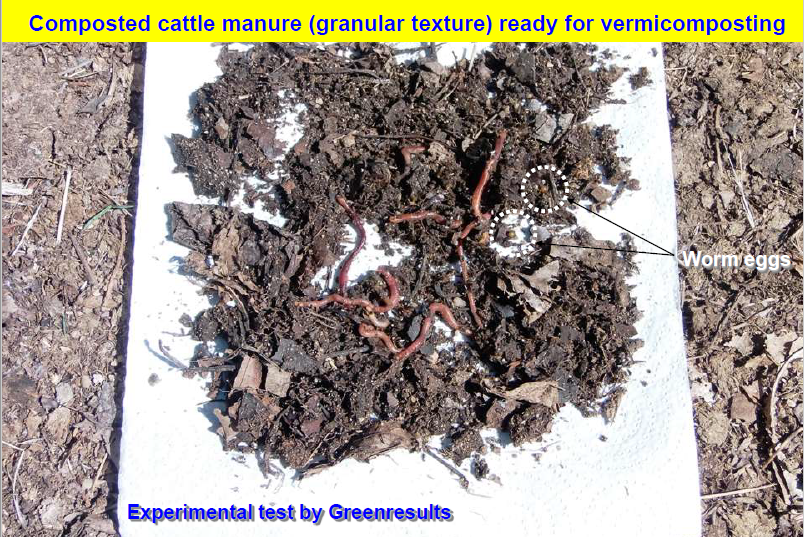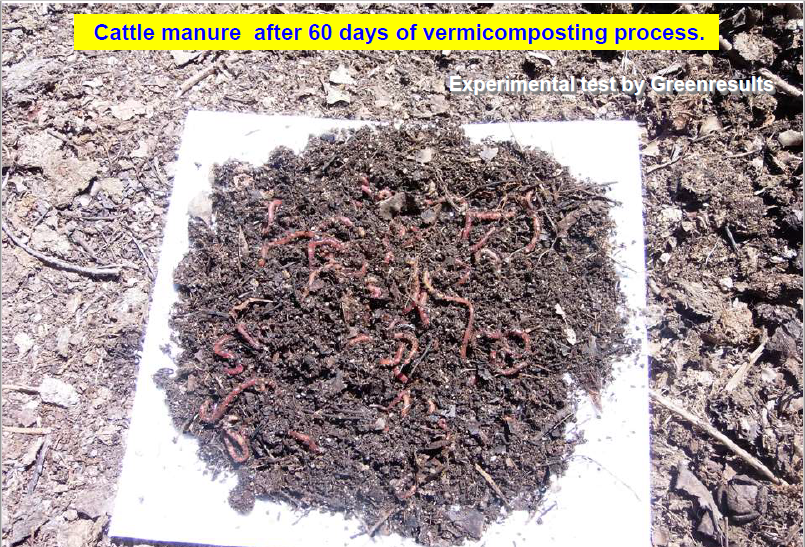This process requires the previous standard composting of manure (a nitrogen-rich "green" item) with carbon materials (dry leaves, paper, dead plant clippings, small wood pieces, hay, straw, sawdust, etc.) to transform manure into a more stable material that stabilize nutrients and reduce leachates as well as the possible hazardous content of raw manure (hormones, antibiotics, pesticides, heavy metals, salmonella, E coli, etc.). Nevertheless, some of this hazardous content may still be present in the final phase of the standard manure compost (this is why this type of compost should not be used to grow salad vegetables), hence the benefits of vermicomposting for nutrient removal and safety. The United States Department of Agriculture (USDA) and the National Institute of Food and Agriculture (NIFA) indicate the following benefits of vermicomposting:
Earthworms and worms in general, are covered with mucus from their intestinal tract; this layer provides a readily available carbon source for soil microbes and leads to a flush of microbial activity in fresh casts.
Vermicomposting improves soil structure, reduces erosion, and improves and stabilizes soil pH. In addition, vermicompost increases moisture infiltration in soils and improves its moisture holding capacity.
Plant growth is significantly increased by vermicompost, whether it is used as a soil additive, a vermicompost tea, or as a component of horticultural soilless container
media.
Vermicompost causes seeds to germinate more quickly, seedlings to grow faster, leaves grow bigger, and more flowers, fruits or vegetables are produced.
These effects are greatest when a smaller amount of vermicompost is used—just 10-40 percent of the total volume of the plant growth medium in which it is incorporated.
Vermicompost also decreases attacks by plant pathogens, parasitic nematodes and arthropod pests.
Further information can be found by contacting:
Greenresults Ltd., International Environmental Consulting.
 Image Courtesy of greenresults.eu
Image Courtesy of greenresults.eu
 Image Courtesy of greenresults.eu
Image Courtesy of greenresults.eu
In addition, casts of Eisenia foetida have the following important properties:
High concentration of humic and fulvic acids. Its combined action allows an immediate load of nutrients assimilable directly by the roots that have a regulating effect for the
integral nutrition of the plants. Residual activity in the soil reaches up to five years.
High microbial load of beneficial soil organisms (40 billion per dry gram) that restores
the biological activity of the soil.
Transforms the soil by improving its structure, making it more permeable to water and air, increasing water retention and the ability to store and release the nutrients required by plants in a healthy and balanced way.
It is an active bioorganic fertilizer that generates a biodynamic action in the soil and improves the organic characteristics of plants, flowers and fruits.
Its pH is neutral and can be applied in any dose, throughout the year, without any risk of burning the plants. The chemistry of the Worm HUMUS is so balanced and harmonious that it multiplies the germination capacity of the seeds.
Increases the pH of acid soils and therefore reduces N2O emissions from fertilizers
It is clean, soft to the touch and is important for bio-stability preventing fermentation or putrefaction.
Contains a high load of beneficial enzymatic and beneficial bacterial that increases the solubilization of nutrients, making them immediately assimilable by the roots. On the other hand, forms soil aggregates that prevent them from being washed away during irrigation, keeping them in the soil for longer.